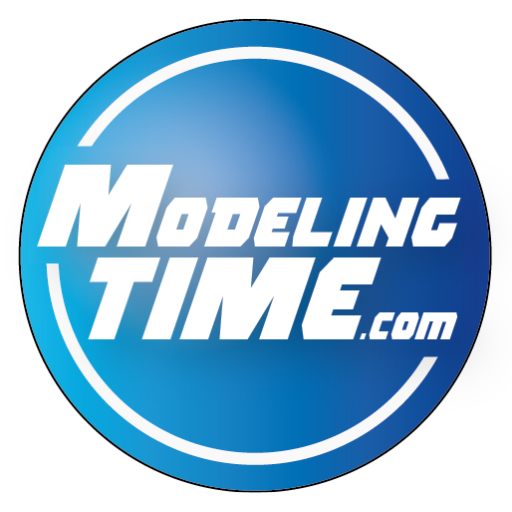Tools:
Clippers,
Glue (White Glue)
Green-stuff
Hobby knife
Sculpting knife.
Tile or anything (To put paint on)
Hand Drill
Materials:
Miniature Skull
Sprue
Sword, axe or any other right hand weapon
Iron wire
Modelling sand
Static Grass
Paints:
Bestial Brown
Bleached Bone
Brown Ink
Boltgun Metal
Burnished Gold
Chaos Black
Codex Grey
Dark Flesh
Fortress Grey
Graveyard Earth
Golden Yellow
Komando Khaki
Magenta Ink
Mithril Silver
Red Gore
Rotting Flesh
Scaly Green
Scorched Brown
Shadow Grey
Shining Gold
Skull White
Snakebite Leather
Terracotta
Vermin Brown
Step 1: Introduction
In this tutorial I’m going to teach you how to make an Orc Captain. First of all, you want to pick a cool model. I picked one of the standard mordor orc fighters:
I’d recommend using the same miniature as I did because that makes it a lot easier to follow the steps as we go.
Make sure you’ve got everything set up to go for it
I hope you really enjoy this tutorial, may it be a good help to you.
Step 2: Trimming
On this step we are going to be trimming our model. That means that all the unwanted stuff has to come off.
“Do I have to throw all those bits away??”
It’s really important not to throw away the bits of shield and hand you clip off, you want to use that later!!
I clipped off the shield at first with a cutter, and smoothened the arm out with a set of hobby knifes.
Then I scraped away some of the fur on his chest, because I want that to be armor later on. You can also cut away the hand in which he holds his sword, if you want that arm to carry an other weapon.
Step 3: Modeling
If you’ve done everything correctly your model should look like this:
Now we can get started with the modeling of this model.
First:
Find any alternative weapon that you want your model to wear. I really thought a doll-mace would do. Also scavenge around for some sprue (the rackets in which the plastic models are stored) and maybe some spare skulls or gondor heads. And you want to look for iron wire, but just really thin (the size of a miniature arrow) length doesn’t matter. And really the most important, green-stuff, the stuff we’re going to use for modeling armor.
Glue your alternate weapon to your models right hand, and set that to dry
Whilst waiting, you can already do a lot of other stuff. You could glue a skull to the platform the model is going to stand on, together with some sprue parts and bits of the clipped-off shield.
Then you prepare a shield for the guy.
“A shield?!!! But I thought you said to clip that off, like omg, what to do now!!!”
Don’t worry, this shield is going to look way better than the old one.
“But how, please tell me, I’m not that great at modeling miniatures”
Ok just drill to small holes into your new, cool shield. The holes have to have the same size as the iron wire. If you do not have such small drilling bits, just use a needle and pinch that all the way through. Then you clip the iron wire into arrow-sized bits and you glue them into the holes you’ve just created.
And voila:
Since your model should be dry by now just glue the shield to your models left arm.
Now we have come to the coolest part of modeling.
“And that is??”
Working with green-stuff of course. We are going to armor this guy up really well.
Before working with green-stuff you need to knead it, till it’s really equal green. Else you get something like this:
What you want is this:
Now keep your sculpting tools wet, and make sure to knead the green-stuff from time to time.
Apply small batches of green-stuff on the chest of your model, and maybe something on his hip, so you can make some sort of holster for his sword if you’ve still got that. And you could also get some on his head to make a nice little helmet.
For the part up his chest, you want to make a pattern of 2 vertical strokes close to each other a gap and then again 2 vertical strokes and a gap, and so on. Then you divide the slim strokes into little squares, and the broader strokes into rectangles so you get this pattern:
Now for the helmet you do practically the same only you start with a little blob of green-stuff. If you squish that, you get a nice pancake-shaped bit. You should press that gently on his head so it stays there and then you go and sculpt it up to a helmet. My finished helmet looked like:
I also made little arrow feathers, which isn’t quite hard actually.
Get really tiny blobs of green-stuff and wrap them around the arrow-ends, now it’s up to you. Just cut into the blobs with a bit of care, until you feel comfortable about the result. It was my first time to making arrow-feathers and they turned out really well.
Now you can set the whole thing to dry and settle for about 12 hours, because the green-stuff has to dry
IF YOU REACH THIS POINT, THAT MEANS ONLY ONE THING, YOU ARE HALF-WAY DONE!!
Authors note: “stop making useless sentences while writing tutorial”
Step 4: Painting
Prime your model with chaos black primer, or your paint your whole model black by brush
ARMOUR:
Start of by adding a layer of terracotta, and then a drybrush of red gore. Once that’s dry, give the armour another drybrush of mithril silver. After that you can paint it with shining gold, and give it a highlight of burnished gold. Then again you drybrush with mithril silver. To finish the whole armour of apply a wash of brown ink & magenta ink.
SHIELD AND ARROW:
FEATHERS
For the arrow-feathers you should start of with a layer of snakebite leather, and then highlight it with bleached bone. After the bleached bone, you could also apply golden yellow to the feathers, but you should do only if you like it.
SHAFTS
For the arrow-shafts you could start by painting them scorched brown and then highlight them with dark flesh.
SHIELD
For the shield part of the job you start by giving the wood part of the shield a layer of scorched brown. You give the metal edge a layer of boltgun metal. Highlight the shield with a first layer of dark flesh, then another layer of dark flesh mixed with snakebite leather. For further highlights you could just keep adding snakebite leather to the mix, till you come to the point where you’re using pure snakebite leather.
To finish the shield, wash it with brown ink.
FUR:
You give the fur a nice layer of snakebite leather. For the highlights on the fur add a little bleached bone to the snakebite leather and apply that mix. For further highlights you can just keep adding bleached to the mix, until it’s pure.
SHIRT:
You give the shirt he’s wearing a nice layer of vermin brown. Like with the fur you are again going to mix a little bleached bone through the vermin brown for each next layer, until you’ve got pure bleached bone.
SKIRT:
This model is wearing a skirt and that definitely needs some paint too. Start with a layer of scorched brown. For the highlights you are again using the same technique as with the shirt and fur, the only difference is that you are using komando khaki now (instead of bleached b).
SKIN:
The skin is the hardest part of the whole model and will take some time to get right.
You first mix equal parts scaly green & shadow grey and apply that as a first layer. Then you are going to add rotting flesh to the previous mix, and apply this new colour as a first highlight. Now add some more rotting flesh to the previous mix, and apply this as a second highlight. Do the previous step 2 times more. As a last step in skin painting you are going to give the head a very fine highlight of pure rotting flesh.
EYES
You could paint eyes on your model if you want, but I wouldn’t recommend that if you have never practised it before, or if you are a beginning painter. If you still want to paint them, give the eyeball a layer of skull white. Then take a fine detail brush, and paint a little black dot inside the eyeball
EXTRA’S:
The last step in process is about the base the model is standing on. Earlier we’ve added pieces of a broken shield, little bits of sprue and (in my case) a skull to the base.
SKULL
Paint the skull by giving it a layer of graveyard earth, and highlight it by adding bleached bone to the graveyard earth. Keep adding bleached bone to the mix for each next layer, till you are on pure bleached bone. As a last little highlight you could apply skull white.
STONES
Give the stones a first layer of codex grey, a highlight of fortress grey and to finish them of a drybrush of skull white.
BROKEN SHIELD
Give the shield a layer of scorched brown, and drybrush it with bestial brown.
SAND & GRASS
Now you’ve gone through all the steps you are going to glue sand to your base (use white glue). When the glue is dry, paint all the sand on the base with brown ink. When the layer of ink is dry (it will take about 5 hours), you drybrush it with bubonic brown, and after that with bleached bone. When everything is dry, add some random spots of static grass.
“So that’s what it takes to make an Orc Captain”
“I really hope you enjoyed”


























